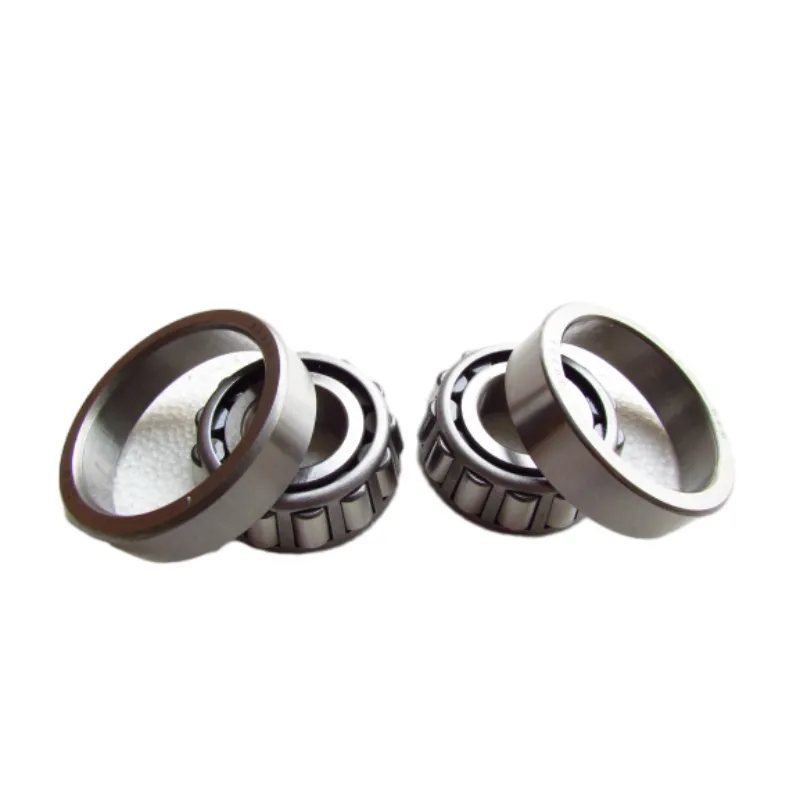
Dùbh . 26, 2024 20:45 Back to list
Comparing Deep Groove Ball Bearings and Angular Contact Bearings for Optimal Performance
Deep Groove Ball Bearings vs. Angular Contact Bearings
When it comes to the world of bearings, it’s essential to understand the differences between the various types available and their specific applications. Two of the most commonly used bearings are deep groove ball bearings and angular contact bearings. Although they may seem similar at first glance, their design and operational characteristics set them apart significantly. This article aims to explore these differences and help you determine which type of bearing is more suitable for your needs.
Deep Groove Ball Bearings
Deep groove ball bearings are among the most widely used types of bearings in various applications due to their versatility and simplicity. They consist of an inner and outer ring, a cage, and several balls that serve as the rolling elements. The deep grooves in the inner and outer rings facilitate the accommodation of radial and axial loads in both directions.
One of the primary advantages of deep groove ball bearings is their ability to handle high speeds. They operate smoothly and are capable of supporting moderate to heavy loads, making them ideal for applications such as electric motors, automotive components, and household appliances. Additionally, manufacturers produce deep groove bearings in various materials and designs, including sealed or shielded versions that provide additional protection from dirt and moisture.
However, while deep groove ball bearings excel in multi-directional load handling, they are not the best choice for applications that require high axial load capacities, especially in one direction. For such cases, a different bearing type might be more suitable.
Angular Contact Bearings
deep groove ball bearing vs angular contact

On the other hand, angular contact bearings are specifically designed to manage both radial and axial loads simultaneously, making them ideal for applications where axial thrust is a significant concern. These bearings feature an inner and outer ring, but the angle at which the balls are positioned relative to the rings gives them their unique characteristics. The contact angle allows angular contact bearings to carry a higher axial load than deep groove ball bearings.
Angular contact bearings are often used in applications where high precision and rigidity are crucial, such as in machine tool spindles, automotive gearboxes, and robotics. They can be arranged in pairs or sets to enhance performance and better accommodate load requirements. Additionally, these bearings are highly effective in settings where space is limited, as their design enables a compact arrangement that maximizes load-bearing capabilities.
Key Differences
The primary differences between deep groove ball bearings and angular contact bearings stem from their load handling capabilities and design features. Deep groove ball bearings are more suitable for applications requiring versatility and high-speed capabilities, while angular contact bearings shine in scenarios involving significant axial loads and precision requirements.
Another vital factor to consider is lubrication. Deep groove ball bearings typically operate well with grease or oil lubrication, while angular contact bearings often require more precise lubrication methods due to their higher speeds and loads. This may involve oil mist systems or specialized lubrication to ensure optimal performance.
Conclusion
In conclusion, understanding the differences between deep groove ball bearings and angular contact bearings is crucial for selecting the right bearing for your application. While deep groove ball bearings offer versatility and high-speed performance, angular contact bearings are the go-to choice for applications that require excellent axial load handling and precision. By considering your specific needs and the operational environment, you can make an informed decision that will enhance the efficiency and durability of your machinery.
Latest news
-
Premium Deep Groove Ball Bearings | High Speed & Reliability
NewsAug.29,2025
-
Durable Scaffolding Clamps - Secure & Reliable Tube Connectors
NewsAug.28,2025
-
Common Failures in Thrust Ball Bearings and Solutions
NewsAug.22,2025
-
How Tapered Roller Bearings Can Take Shock Loads
NewsAug.22,2025
-
Angular Bearings in High-Precision Spindles
NewsAug.22,2025
-
The Impact of Misalignment on Cylindrical Roller Bearing Performance
NewsAug.22,2025
